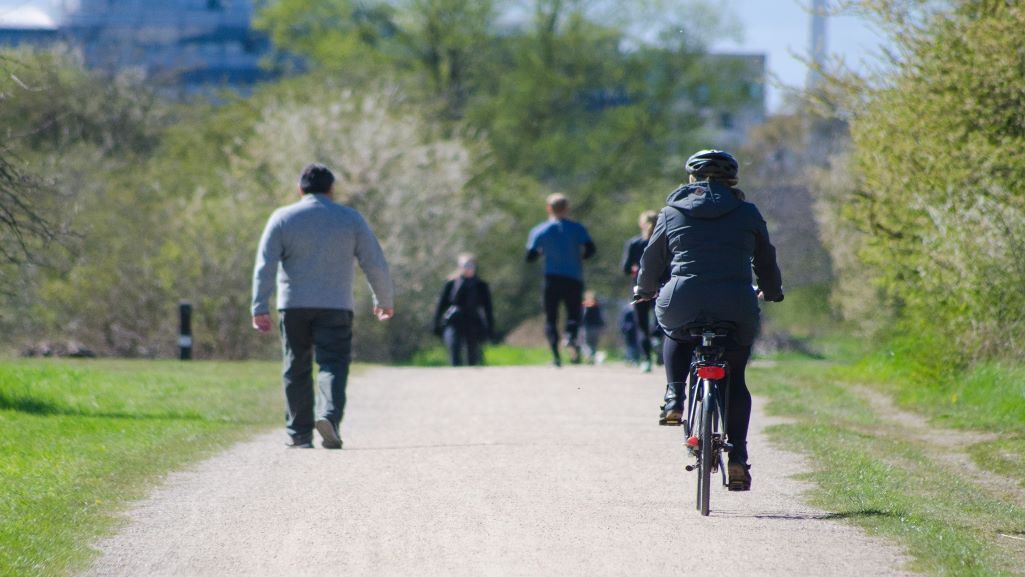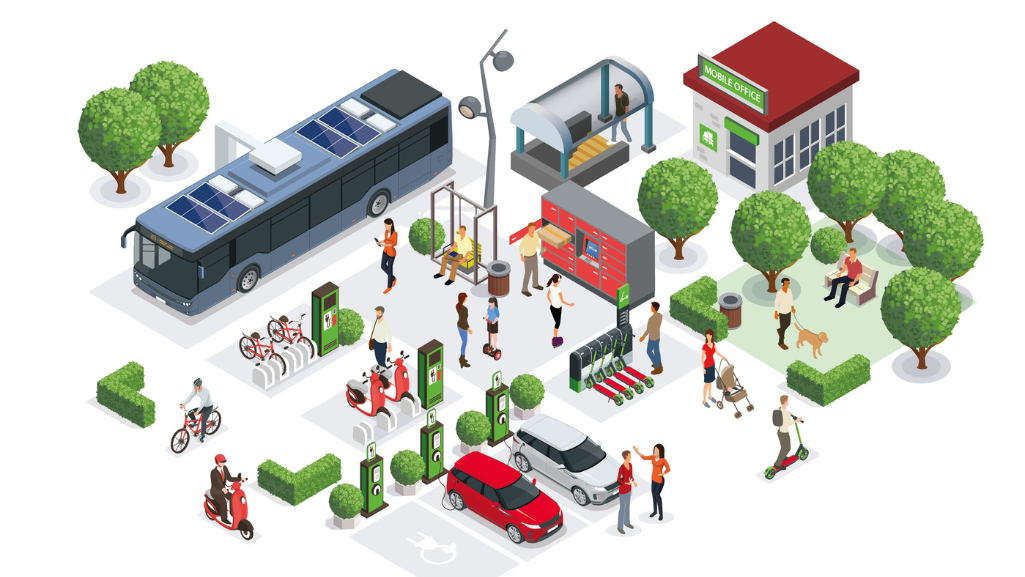The COVID-19 pandemic created a massive reduction in regular commuting, as well as inspiring large swaths of people to take more socially distant methods of transport, such as walking and cycling. As a result, our air became cleaner, we had less traffic congestion, and nature flourished at levels unprecedented for the last few years – just a few of the advantages of eco-friendly transportation.
But what happens when we go back to our pre-pandemic methods of transportation? Is that even a viable option?
As the pandemic is (hopefully) coming towards an end, we’ve learned an important lesson: we need to make changes to our transportation infrastructure, so that it’s more sustainable, flexible, and efficient. People are no longer interested in sitting in a two hour, one way commute to work that’s full of traffic jams – and rightly so! We’ve all learned that there are much better ways to spend our free time.
Nonetheless, the biggest obstacle to making advancements to eco-friendly transportation becoming the norm is that it’s still not the most convenient choice. Most people prefer cars over sustainable options like walking, cycling, skateboards, push scooters, and roller skates. So if we want to become more sustainable, we’ve got to adapt city infrastructure in a way that incentives people to choose eco-friendly options over cars.
Inefficient city infrastructural patterns and the lack of active links between different transportation modes result in eco-friendly transportation holistically underperforming. Simply put, we need to make it convenient and people will start to use it more.
To help city planners find a balance between the old ways and society’s new transportation expectations, I’ll go over how cities can promote the eco-friendly transportation methods by making the choice to use them much more convenient.
What are the advantages of eco-friendly transportation?

There are multiple types of eco-friendly transportation, so let’s now look into how they impact our environment, public health, and the economy as well as what advantages they bring.
#1 Cycle more, improve the environment and public health
Bicycles have already turned into a trend that people aren’t willing to let go of, as proven by an increase in sales by 47% in Europe in 2020.
You know the score:Stop any cyclist on the street, and they’ll list you a bunch of benefits you’re missing by not using a bike on a daily basis. To save you the hassle of interrupting someone enjoying their ride, the benefits of bicycling include but are not limited to:
- Providing joy and positive energy to the rider
- Ensuring physical activity during the day
- Avoiding traffic jams
- Taking ten times less space than cars for parking
- Being budget-friendly
- Emitting no greenhouse gas at all
- Requiring fewer roads to be paved
But in order to get people to choose cycling as their main transportation method, city planners need to improve on connecting bike routes with other forms of transportation. This way, a bike becomes an option of convenience, not annoyance.
#2 Walking is true win for people, cities, and the environment
The advantages of other eco-friendly transportation options mainly apply to walking. For example, walkers receive many health benefits such as burning calories, a stronger heart, lower blood sugar, better mood, and longer life. (A hint for city governments here: healthier citizens also mean less healthcare costs).
And it gets even better:
Environmental and economic benefits of walking, such as efficient usage of space, cost-free transportation, as well as quieter and more pleasant surroundings are the answers to why walking can literally be Earth’s savior.
What can city planners do to make this scenario a reality?
Research indicates that the choice to use eco-friendly transportation comes down to a few principal factors. If you want to know what affects people’s decision of whether to bike, drive, or walk, ask the following:
- Do the area and roads seem safe enough to the eyes of a potential biker and pedestrian?
- How is the continuity and comfort of the cycling, walking, and overall city transportation network?
- Does transportation infrastructure satisfy both pedestrians and bikers with various skill sets, experience, and ages?
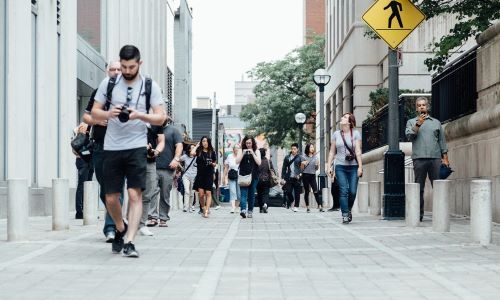
#3 Reduced fuel consumption
Eco-friendly means of transport have two approaches to solving excessive and harmful fuel consumption problems:
- Stopping fuel consumption all together: Walking, skateboards, bikes, and scooters reject the idea of motorized transport entirely, so the more we use these transportation methods, the less fuel we use. Not to mention that these are all free!
- Replacing traditional fuels with sustainable alternatives: There are also less harmful fuel options such as biofuels, hydrogen, and electric energy. When used in combination with incentives to increase walking and cycling, that’s a great way for a city to balance out the transportation needs for citizens of different income levels and across different locations.
Either way, reducing fuel consumption paves a city’s path toward becoming more sustainable.
#4 Improve air quality
Moving people away from vehicles harmful to the environment is already one of the top priorities of global communities and organizations due to the fact that 29% of global greenhouse gas emissions come from transportation. When city planners promote walking, cycling, and other eco-friendly transportation methods, they help ensure that the next generations will have enough clean air to breathe.
#5 Faster commute times
The adoption of eco-friendly commuting at scale results in less congestion and traffic accidents, decreasing average time on the road. Furthermore, alternative transportation options, such as walking, bikes, scooters, skateboards, and others offer more routes from point A to B than cars and other oversized vehicles. So, for example, taking a shortcut with a bicycle can save you minutes or even hours, which you wouldn’t be able to avoid while driving a car.
The growing need for environmentally friendly ways of transportation
As a result of worldwide lockdowns and reduced access to gym facilities, many people turned to biking in an effort to stay fit and safely commute. In fact, biking became so popular that it caused a global bicycle shortage. This is why now is the perfect time for city governments to integrate eco-friendly transportation infrastructure into their plans.
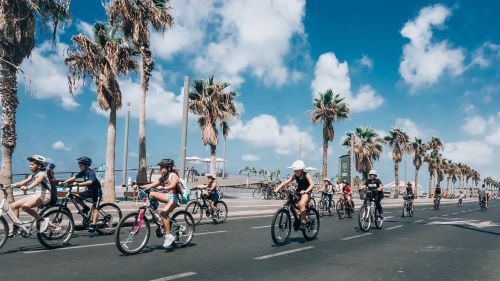
The 15 minute city & eco friendly commuting
One of the best possible ways to promote biking and walking as a primary transportation method within urban areas is the concept of the “15 Minute City”. The 15 Minute City arose from the idea that we live in cities to benefit from their urban facilities and communities, so where is the logic if we have to spend hours on the road to reach them?
In fact, 15 minutes of cycling or walking should be all you need to arrive anywhere in the city. Carlos Moreno, a Franco-Colombian scientist and university professor, points to four main factors to support this:
- Proximity: Things need to be closer together.
- Diversity: The way people use the surrounding area should include a mix of urban amenities relevant to them.
- Density: There needs to be enough people within a given area to support a wide range of businesses within a small area.
- Ubiquity: The neighborhoods need to be affordable for people with different income levels.
When city infrastructure considers these four factors, you’re well on your way toward increasing the use of eco-friendly transportation methods.
How to build a cost effective and environmentally friendly transport system
Now that you’re familiar with the necessity of eco-friendly transport, let’s move to the most crucial part: putting it into practice. Transitioning to eco-friendly transportation is all about people understanding its benefits and believing that it’s convenient enough for them to use.
#1 Develop infrastructure that promotes eco-friendly transportation
Ensuring that people are open-minded to using eco-friendly means of transportation is only half the project. The second half involves implementing city planning measurements such as:
- Building safer, wider, and more comprehensive bicycle and pedestrian routes
- Prioritizing non-motorized vehicles over motorized ones in crowded city centers
- Having more secure parking areas for bikes and scooters all around the city
- Developing bike and scooter rentals in central locations, public transport stations, and other busy streets
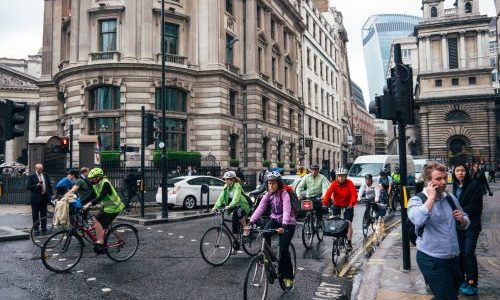
With a seamless and convenient infrastructure in place, eco-friendly options can become the top choice.
#2 Plan and forecast how that infrastructure will be used
But once you’ve got more people on board, how can cities adapt existing infrastructure to accommodate the increased demand in both walking and cycling capacity? This is where stakeholders need sophisticated tools that enable them to make data-driven decisions about city expansion and development projects. Here are three examples of such tools:
- PTV Visum: Enables city planners to carry out traffic analyses, model various groups of people on roads and their interactions, arrange public transport services, as well as craft future-proof, eco-friendly transportation strategies.
- PTV Viswalk: Shows if pedestrian paths are the correct size for people using them. With this tool, city planners can simulate, prepare, and implement safety and evacuation measures for pedestrians by simulating human walking behaviors and evaluating capacities in public areas.
- PTV Bicycle Planner: The versatile editing and comparison functions give planners the ability to compare multiple variants and scenarios and evaluate them objectively to select the optimal bikeway design.
All in all, the opportunity is ripe for city planners to harness the newfound public willingness to utilize eco-friendly transportation options like walking and cycling. But in order for that willingness to remain, it’s necessary to prepare city infrastructure to consistently make eco-friendly transportation the most convenient choice for everyone.
